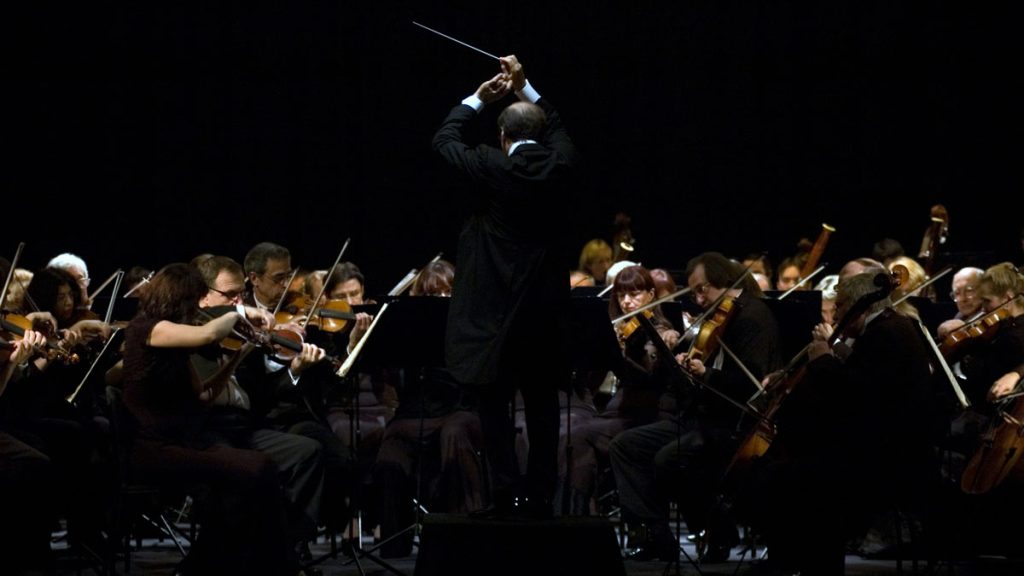The symphony orchestra, with its vast array of instruments and diverse musical voices, requires a guiding force to bring its melodies to life. Enter the conductor, the maestro who stands before the ensemble, poised to lead and shape the symphony into a breathtaking masterpiece.
In this immersive blog article, we delve into the multifaceted role of conductors in guiding orchestras to musical perfection. Join us as we unravel the artistry, leadership, and musical brilliance that conductors bring to the stage. Discover how these maestros interpret the composer’s vision, inspire musicians, and unite the symphony in the collective pursuit of artistic excellence.
The Interpreter of the Composer’s Vision
The conductor serves as the vital link between the composer and the orchestra, translating the written score into a living, breathing performance. With meticulous attention to detail, conductors study the musical notation, analyse the composer’s markings, and delve into the historical context of the composition. They immerse themselves in the nuances of the music, understanding the intricacies of the composer’s style, intentions, and the cultural backdrop in which the piece was created.
Through their deep understanding of the score, conductors bring forth their unique artistic interpretation, infusing the music with their personal insights, emotions, and vision. They make decisions regarding tempo, dynamics, phrasing, and expression, shaping the overall character and mood of the piece. With their gestures and movements on the podium, conductors communicate their interpretation to the musicians, guiding them through each section, ensuring precision, unity, and expressive cohesion.
In essence, the conductor is the interpreter of the composer’s vision, channelling their creative genius and communicating it to the orchestra and the audience. Their ability to breathe life into the music, capture its essence, and create a profound musical experience is a testament to their skill, dedication, and artistry.
Leadership and Musical Direction

Conductors are the guiding force behind the symphony, leading the ensemble with their baton and gestures. Within the realm of leadership and musical direction, conductors hold a unique role as they guide the symphony through their expertise and interpretive abilities. They possess a keen sense of leadership that extends beyond mere direction, encompassing the ability to inspire, motivate, and unify the ensemble.
Conductors exercise leadership by setting the overall artistic vision and musical goals for the performance. They make critical decisions regarding the interpretation, tempo, dynamics, and expressive elements of the music, shaping the collective sound and ensuring a cohesive and impactful performance. Through their musical direction, conductors provide a sense of clarity and guidance, enabling the musicians to navigate the intricacies of the composition and perform as a unified whole.
An essential aspect of a conductor’s leadership is their capacity to foster collaboration and create a supportive environment within the orchestra. They encourage open communication, mutual respect, and a sense of shared responsibility among the musicians. Conductors nurture a spirit of teamwork, allowing each musician to contribute their individual talents while working together towards a common musical vision. They inspire and empower the ensemble, cultivating a sense of trust and camaraderie that enables the musicians to perform at their best.
Musical direction goes beyond technical precision; it involves the conductor’s ability to convey the artistic intention and emotional depth of the music to the musicians. Conductors employ various communication techniques, such as expressive gestures, facial expressions, and body language, to elicit the desired musical nuances and evoke the intended emotional response. Their skillful guidance helps shape the collective sound, ensuring that the orchestra delivers a captivating and meaningful performance.
In essence, the conductor’s role in leadership and musical direction extends far beyond keeping time and cueing entrances. They inspire the ensemble, shape the artistic vision, and foster a collaborative and unified approach to music-making. Through their leadership and direction, conductors have the power to ignite the passion and creativity of the musicians, resulting in transcendent performances that resonate deeply with both the performers and the audience.
Rehearsal Mastery: Shaping and Refining the Performance
During rehearsals, conductors dedicate themselves to achieving precision and cohesiveness within the ensemble. They meticulously study the score, addressing issues of intonation, dynamics, articulation, and phrasing to refine each musical phrase. Conductors guide the musicians through technical challenges, fostering a deep understanding of the music and facilitating seamless transitions between sections.
The rehearsal process becomes a collaborative journey, with conductors actively engaging with the musicians to shape the interpretation of the music. They provide guidance, feedback, and encouragement, nurturing a sense of collective ownership and commitment to the performance. Using verbal instructions, demonstrations, and expressive gestures, conductors effectively communicate their expectations and desired musical outcomes.
Through their expertise and dedication, conductors transform rehearsals into transformative experiences. They shape and refine the performance, bringing out the best in each musician and the ensemble as a whole. Conductors ensure ensemble balance and blend, crafting the arc and pacing of the performance to create a captivating and unforgettable musical experience for both performers and audiences alike.
Collaboration and Communication
Conductors thrive in their ability to collaborate and communicate effectively, forging a strong bond with each musician. They establish a supportive environment that encourages individual artistic expression while promoting a sense of unity within the ensemble. Through their expertise and guidance, conductors bring out the best in each instrumentalist, nurturing their talents and allowing them to shine.
In their collaboration with individual musicians, conductors work closely to understand and respect their unique strengths and abilities. They offer guidance on interpretation, technique, and musical expression, ensuring that each musician’s voice is heard and valued. By fostering a sense of trust and mutual respect, conductors create an environment where musicians feel inspired to take risks, explore new ideas, and contribute their own artistic perspectives to the collective performance.
At the section level, conductors serve as mediators, fostering cohesion and balance among the players. They carefully listen to each section’s contribution and guide them in achieving a unified sound. Conductors ensure that sections blend seamlessly together, paying attention to dynamics, phrasing, and articulation, to create a well-balanced and sonically rich performance.
On a broader scale, conductors oversee the collaboration of the entire orchestra, uniting musicians from different sections into a cohesive musical entity. They facilitate communication between sections, ensuring that each musician is aware of their role and how it contributes to the overall musical tapestry. Conductors employ their leadership skills to guide the orchestra through transitions, tempo changes, and musical cues, enabling a synchronised and expressive performance.
Through effective collaboration and communication, conductors cultivate an environment that inspires creativity, mutual respect, and collective musical growth. They bring out the best in each musician and create a unified, harmonious sound that captivates audiences and leaves a lasting impact.
Inspiring Artistic Excellence

Conductors are catalysts of artistic excellence, inspiring musicians to reach new heights of performance. They possess a unique ability to recognize and cultivate the potential within musicians, providing encouragement, constructive feedback, and guidance. Through their passion for the music and their unwavering belief in the capabilities of their ensemble, conductors inspire musicians to push beyond their comfort zones, explore new horizons, and continuously strive for improvement.
As mentors, conductors offer invaluable guidance and support, nurturing musicians’ artistic growth and development. They share their knowledge, interpretive insights, and technical expertise, helping musicians delve deeper into the music and unlock their fullest artistic potential. With their mentorship, conductors instil discipline, perseverance, and self-belief, empowering musicians to embrace challenges, overcome obstacles, and evolve as artists.
Furthermore, conductors are visionary leaders who inspire musicians to transcend boundaries and embrace extraordinary interpretations. They guide the ensemble towards a shared artistic vision, infusing performances with personal insights, emotions, and artistic depth. Through their unwavering dedication and inspiring leadership, conductors create an environment where artistic greatness can be realised and shared with the world.
The Conductor’s Presence on the Stage
The conductor’s physical presence on the stage is a mesmerising sight to behold. As they step onto the podium, their energy fills the air, commanding attention and setting the stage for the musical journey that is about to unfold. Their confident demeanour, poised gestures, and expressive body language captivate both musicians and audiences alike, drawing everyone into the world of the music.
Through their commanding presence, conductors serve as a focal point, guiding the eyes and ears of the musicians towards a unified musical interpretation. Their dynamic movements convey the nuances of the music, from subtle changes in dynamics to sweeping gestures that shape the overall phrasing and tempo. With a single glance or a lift of the baton, conductors communicate with precision, ensuring that every musician is attuned to their vision and synchronised in their performance.
Moreover, the conductor’s physicality adds an element of theatre and drama to the performance. Their sweeping arm movements, precise cues, and animated expressions create a visual spectacle that enhances the emotional impact of the music. Audiences are not only drawn to the captivating sounds emanating from the orchestra, but also to the conductor’s commanding presence and the way they breathe life into the music with their gestures and expressions.
In this symbiotic relationship between conductor, musicians, and audience, the conductor’s physical presence becomes an integral part of the performance experience. Their charisma, magnetic aura, and commanding stage presence elevate the aesthetic dimension of the symphonic journey, creating a multisensory experience that immerses listeners in the power and beauty of the music.
Conclusion
As we conclude our exploration of the indispensable role of conductors in guiding orchestras to musical perfection, we are reminded of the profound artistry, leadership, and dedication these maestros embody. Conductors serve as interpreters, leaders, mentors, and visionaries, guiding the symphony toward a harmonious blend of artistic expression. With their baton in hand, they shape the music, inspire musicians, and unite the orchestra in the pursuit of musical excellence.
Let us celebrate the maestros who stand before the symphony, their gestures guiding the collective pursuit of artistic greatness. Together, conductor and musicians create a symphonic tapestry that resonates with audiences, capturing the essence of the composer’s vision and bringing forth the magic of musical perfection.



